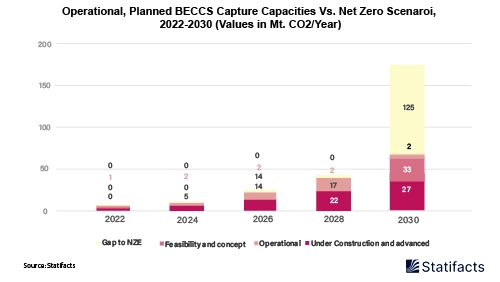
06 June 2025
Bioenergy with Carbon Capture and Storage (BECCS) is emerging as a key climate solution with strong economic incentives, particularly in the United States. The 45Q tax credit, renewable energy credits (RECs), and carbon dioxide removal (CDR) credits combine to make BECCS financially attractive. With 9 GW of biomass power plants currently operating in the Lower 48 states, the groundwork for expanding bioenergy with carbon capture and storage is well established.


There are many variations of passages of Lorem Ipsum available, but the majority have suffered alteration in some form
URL TO BE USED AS REFERENCE LINK:
Placeholder content for this accordion, which is intended to demonstrate the .accordion-flush class. This is the first item's
accordion body.
Placeholder content for this accordion, which is intended to demonstrate the .accordion-flush class. This is the second item's
accordion body. Let's imagine this being filled with some actual content.
Placeholder content for this accordion, which is intended to demonstrate the .accordion-flush class. This is the third
item's accordion body. Nothing more exciting happening here in terms of content, but just filling up the space to make it look, at least at
first glance, a bit more representative of how this would look in a real-world application.
Do you still any question?
Feel free to contact us anytime using our contact form or visit our FAQ page.
Your contact to the Infographics Newsroom
